The last "infantry tank"
The A20 British infantry tank design was a prewar General Staff specification, meant to be a replacement for both the Matilda II and the recent Valentine. Just like the former, it incorporated typically trench-warfare features. It was envisioned as slow (infantry pace), heavily protected with an armament only suitable to deal with fortifications (low velocity, high caliber, high explosives), crushing barb wire in the process. The tracks had to be long enough to allow large trench crossings, including anti-tank ditches.The first design had a strong WWI flavor, with two QF 2-pdr ordnance guns placed in side sponsons, a reminder of the "lozenge design" of the Great War. But this obsolete design soon incorporated a 60 mm (2.36 in) steel protected turret, like the one on the Matilda II. The initial engine was the 300 hp flat-12 Meadows already used by the Covenanter cruiser tank. The A20 final design was approved and a contract order was signed for two prototypes, to be assembled by Belfast shipbuilders Harland and Wolff (original makers of the famous Titanic). These two prototypes were delivered in May 1940.
Various weapons combinations were tried, ending with a 3 in (76.2 mm) howitzer. However, the A20 proved sluggish, its 43 tons overwhelming the engine. One prototype was shipped to Vauxhall Motors, at Luton, to try to enhance its performance with a revised, lighter design, and more powerful engine. They devised a strange arrangement, called the "twin six", in fact a "flat-12" Bedford. This was the blueprint for the A22.
The A22, Tank, Infantry Mark IV
During the battle of France, the initial design, based on trench warfare, was proved to be obsolete, and a new one was envisioned by Dr. H.E. Merritt (Woolwich Arsenal Tank Design director). This model was then shipped to the Vauxhall factory at the end of June 1940. An initial order was given for two prototypes, delivered by Vauxhall in December 1940. But, more refinements, trials and modifications were needed before production could start, and the first Mark I rolled out of the factory line in June 1941.The A22, Tank, Infantry Mk.IV (the Mk.III was the Valentine) might look like it was named after the iconic British leader of the time. But -according to Churchill himself- the name honored the memory of his XVIIth century ancestor, Sir John Churchill, 1st Duke of Marlborough. It could also have commemorated the instrumental leadership of Sir Winston Churchill, then First Lord of the Admiralty, and the head of the "Landship Committee", the initiator of British tank development during the Great War.
Design of the A22
Suspension and drivetrain
At the opposite spectrum compared to the nimble Cruisers, with their Christie-style suspensions, the Churchill was a kind of "back to basics" and had a suspension system only tailored for large trench crossing and impassable or extremely muddy terrain. Since protection was also paramount, both the size and weight had to be compensated by minimal possible ground pressure. The engineers did it the old way, by adding multiple small road wheels, each sprung by sturdy coil springs, interlocked with the biggest and heaviest track links ever designed for a British tank. The 58 track links rolled under 22 paired ground 10-inch (25.3 cm) roadwheels (11 bogies), of which two were posted at the front for unditching and two at the rear, serving as track tensioners. There were no return rollers as the tracks ran above "panniers", which cleared the sides for an access hatch. The drive sprockets were at the rear, and idler at the front. At first, the upper tracks were left completely unprotected, like the typical WWI "lozenge" tanks. But this was changed in 1942 (Mk.III), and the upper tracks were entirely covered by "catwalks", while the ends received massive mudguards. This WWI appearance owed to the hull being significantly shorter than the tracks, which protruded a good 40 in (1.2 m) to the front. This was done with cratered terrain and deep trenches in mind.Engine
The Churchill\'s Bedford was a specifically built twin engine in an opposite horizontal configuration, mated on a common crankshaft. It was called the "flat twelve". It had a 1.296 cubic inch capacity, rated at 350 bhp@2000 rpm (261 kW), giving a 960 lb/ft (1,300 N/m) torque for a rpm ranging from 800 to 1600.Four Solex carburetors, with their own manifolds, each served three cylinders, forming a single head. All the engine components had been ventilated around to provide easier access and maintenance inside the compartment. The air needed to cool the engine was drawn from the fighting compartment, dragging gun fumes through air cleaners when opening a flap between the two compartments. The engine fumes were exhausted into two large side louvres, one of the most recognizable features of the Churchill. These will adopt various shapes during production, the early type being the "cylindrical" style. The cooled air was blew through the radiators by a fan actioned by the clutch. This fan also blew air onto the gearbox and towards the hull rear.
Transmission
The Merritt-Brown 4 speed constant mesh epicyclic gearbox was characterized by a regenerative steering system controlled by a tiller bar, instead of brake levers or a steering wheel. This caused concerns when training drivers, but the unconventional system had advantages of its own. It was rendered necessary by the sheer weight of the tank to control with a modern hydraulically-driven servo assistance. A system mirroring the complex oil-driven steering mechanism on the French B1 tank, which was also meant to aim very precisely the hull\'s main gun, an armament configuration also adopted on the first Churchill. The system also allowed to change the relative speed of each track, providing, ultimately, a "neutral turn" capability. The tank could turn entirely on the spot, which was a crucial capability given the size and weight of the hull. The drive sprockets were planetary-type final reduction gears.Hull
Construction in 1940 (A20) called for a riveted hull. This was the norm until the Mk.VII (A22F), on which all plates were welded. These were simple flat armored plates, bolted to the steel chassis. The hull was long, but relatively narrow, in accordance with the standard wagon lorries of the Army. Normal access was performed through two side hatches, round or squared. Two massive storage boxes were fitted to the rear, on each side of the engine compartment. The driver compartment was not separated from the fighting compartment in the middle, which was roomier than usual.The original armor specifications called for 0.63 to 4 in armor thickness (16 to 102 mm), which was greater than that of the Matilda II, and promised near immunity against most antitank guns of the time, or heavy shrapnel. It was, in 1941, the most heavily protected tank in the world (the Russian KV-1 being second). The Germans had nothing comparable until the Tiger I was out, but, in the meantime, the armor was considerably reinforced. By the time the Mark VII was operational in 1943, the frontal armor had reached a staggering 6 in (152 mm), while the minimal thickness (bottom) was raised to 0.98 in (25 mm), with sides up to 102 mm (4 in). Only the rare Tiger II and Jagdtiger surpassed it on this matter. The only problem was it was still flat, loosing efficiency compared to a sloped one. Nevertheless, this protection gave tremendous confidence to the crews.
Turret
The early turret was relatively small compared to the hull, entirely cast, rounded, and wide enough to accommodate the commander and servants of the standard 2-pdr (40 mm/1.57 in) gun. The mantlet, both for the main gun and coaxial Besa machine gun, was internal. There were three vertical slots, with the rangefinder optics at the right, gun in the center and coaxial machine-gun on the left, slightly off-centered. A small storage bow was later fitted to the turret\'s rear, at first to give extra storage, but, at the end of the Churchill development, also to provide a counterweight following gun upgrades. A second storage was added to the left side. The Vickers Tank Periscope Mk.IV was soon adopted. There were two of them, one for the gunner, another for the commander, on each side of the turret, and, behind them, two half-door hatches. Two other periscopes were fitted on the hull, over the hull gunner and driver positions, both of them being provided with roof exit hatches. As customary, the radio compartment was fitted at the rear of the turret, with two antennae.With the Mk.III, the turret was enlarged, in order to house the bigger 6-pdr (57 mm/2.24 in). It was now hexagonal, with flat sides, welded, and significantly taller and wider. The gun and machine-gun were now narrowly coupled on the same mantlet, still inside the hull, which now had a large central opening, allowing elevation.
The last evolution came with the Mk.VII. The turret, still hexagonal and angular, was partly cast and welded, asymmetric, and lengthened at the rear, to house a bigger 75 mm (2.95 in) gun. The internal mantlet was holding together, in a narrow configuration, the main gun, the coaxial Besa and the gunner optics. Two deflector bulges were welded on each side of this opening, to deflect incoming rounds from sensitive angles.
Armament
The early idea of lateral barbettes being dropped, there were still concerns about the main armament. In the end, a compromise inspired by the French B1 was chosen, with a 6-in (75 mm) hull howitzer to deal with concrete fortifications, while retaining antitank capabilities with the standard 2-pounder (40 mm/1.57 in), mounted in the turret. In 1940, it was certainly superior to most 37 mm (1.45 in) guns in service throughout the world at that time, with an excellent muzzle velocity and a great rate of fire. Another early variant was the Mk. II CS (Close Support), fitted with a 3 in (76.2 mm) howitzer, which was only capable of firing smoke shells. The hull gun proved inefficient, and was replaced, on the Mk.III, with a hull machine-gun. Only in 1942, when the real AT capabilities of the puny 2-pdr appeared blatantly inefficient against superior German armor, did concerns appear about upgrading the main armament, which also required a new turret.This came along with the Mk.III, fitted with the standard 6 pounder (57 mm/2.24 in) gun, and a completely new turret and internal configuration. This gave the Churchill the long-awaited capability of going against up-armored Panzer III/IVs in North Africa, and proved instrumental at the second battle of El Alamein. However, by the time of the Tunisian campaign, the upgraded Panzer IV Ausf.F2 proved to have superior range and penetration power. Once again, a new upgrade was envisioned. But even before that, a clever and resourceful officer, named Percy Lowell, managed to fit inside regular Churchill IV turrets spare US-built 75 mm (2.95 in) guns, obtained from countless disabled Sherman tanks. The result, known as the "NA-75", fought during the final phase of the Tunisian campaign, and again in Normandy. But even the Sherman main gun was not up to the task, and the Mk.VII, or "heavy Churchill", was the first to introduce the "short" 17-pdr (75 mm/2.95 in), which had better characteristics than the 6-pdr, but still lacked punch against the latest German tanks, like the Tiger or Panther. The final attempt to fit the "long" 17-pdr version came too late, with the "Black Prince". Only prototypes were built, and never saw action. By that time, more modern tanks were in final development stage, like the Centurion.
Production & evolution
The early A22 Mk.I was not so different externally from the later Mk.VII/VIII, but almost everything was changed in the meantime, making these later versions the best of any, triggering a wave of upgrades and modifications of previous versions (namely the Mk.IX, X, XI). This renders it, in the study of photographic evidence, tricky to determine if the tank was of one the upgraded types, or a late "regular" one. The turret shape is a good clue, as are side details. The late Churchills were the most heavily armored, best armed, but also the slowest of the entire series. A famous offspring of this lineage, the A43 "Black Prince", was an attempt to give the British Army a heavy tank capable of dealing, on equal terms, with its latest German counterparts, but had nothing to do with the early infantry tanks.Churchill Mk.I
First series with 303 built in 1941. The tracks were entirely unprotected. This series was characterized by an early rounded turret with the 2-pdr QF standard gun, coupled with a 3 in (76.2 mm) hull howitzer. Plagued by teething problems, they were relegated to training or reconverted into special genie versions.Churchill Mk.II (Churchill Ia)
The hull howitzer was replaced by a Besa machine-gun, in order to gain extra space and simplify production. 1127 delivered until mid-1942. Many problems had to be overcome until 1943. Also relegated to the second line or reconverted.Churchill Mk.II CS (close support)
The turret 2-pdr and the hull 3-in howitzer swapped places. Supplied with smoke rounds. Proved quite unsatisfactory. Only a handful built.Churchill Mk.III
The first major set of modifications. For the first time, the turret was welded, and housed a 6 pdr gun, with a coaxial Besa machine gun, another replacing the former hull howitzer. Many changes to the engine, transmission and protection were made, including the "catwalk" above the upper tracks. 675 were delivered in 1942.Churchill Mk.IV
The biggest production of all series, with 1622 tanks. It was given the cheaper and less labor-intensive cast turret. The early production models had a counterweight to balance their 6 pdr gun, and many were retro-fitted with the new long barrel 6 pdr (57 mm/2.24 in) Mk.V gun.Churchill Mk.V
It was basically a Mk.IV for close support, with a 95 mm (3.74 in) howitzer and 47 rounds. 241 built in all in 1943.Churchill Mk.VI
A minor upgrade of the IV, with the new 6 pounder Mk.V gun. 200 were built, but production was quickly swapped for the new VII, and the factory lines were then busy upgrading III/IV versions to the new standard.Churchill Mk.VII
A major modification, which was also called "heavy Churchill", was two ton heavier, better protected than ever, with 152 mm (6 in) of frontal armor, and the new 17 pdr (75 mm) gun. This version was reclassified as the Ordnance A42 in 1945. Production was around 1400, built until late 1944.Churchill Mk.VIII
This last version was a close support one, fitted with a 95 mm (3.74 in) howitzer and 47 rounds. Around 200 were built in 1944.Upgraded versions
The following marks were not new production vehicles, but completely overhauled and upgraded earlier models, so production figures are irrelevant. Many were also modified as more radical variants and sub-variants (see later), including two successive sets of modifications.
Churchill Mk.IX
Mk.III/IV refitted with the new Mk.VII turret, transmission and suspension. Some only received the latter improvements and kept their old turret. These were known as Mk.IX LT (for "light turret"). No upgrades in armor.Churchill Mk.X
Mk.VI upgraded to the Mk.VII standard.Churchill Mk.XI
Mk.V upgraded to the Mk.VII standard, but also receiving extra armor.Churchill NA75
Around 200 Churchill Mk.IVs were upgraded, prior to "Operation Whitehot", with 75 mm (2.95 in) guns and mantlet of discarded or destroyed Shermans, in March-June 1944. The conversion was first realized on 48 Mk.IVs in North Africa (hence the "NA") by Capt. Percy Morrell, later rewarded for this initiative. The front turret section had to be cut off and the gun introduced, then mantlet slot, and the whole package was welded over. However, it was a left hand loading system (the usual British system called for a right hand loading), and the gun had to be turned upside down and all controls adapted. The turret also had to be counter-balanced, as the gun was heavier.Special versions
Presented in chronological order. Many were derived from earlier series, never upgraded to the Mk. VII standard, like the Mk. I/II/III. These were popularly known by the common soldiers as "Hobart\'s funnies".Churchill Oke
In mid-1942, prior to the upcoming raid on Dieppe, Major J.M. Oke devised a flame-throwing modification, applied to three prototype vehicles, named "Boar", "Beetle" and "Bull". A pipe apparatus, with the tank fitted at the rear, was linked to the front left hull Ronson flame projector, leaving the right hand hull machine-gun unobstructed. The three vehicles were part of the first wave at Dieppe.Churchill AVRE
The most common modification of all genie versions, designed after the painful raid of Dieppe. This was the typical armored vehicle of the Royal Engineers, equipped with the petard, a 290 mm (11.41 in) Spigot mortar, which fired an 18 kg (40 lb) warhead and had a practical range of 137 m (150 yards). Its purpose was to clear concrete bunkers and all kind of enemy fortifications and obstacles. Reloading was performed by the co-driver, staying in his hatch, and the turret facing him. It was a basis which could serve for many other purposes, like the mine-flail version, explosive carrier, fascine carrier, brideglayer, etc.Bobbin carrier
This version was used during landings, on sandy beaches and soft grounds (extremely muddy) in general. A 10 feet large (3 m) canvas bobbin was carried at the front of the leading Churchill, released to create a rolling path for the following vehicles.Fascine carrier
A WW1 solution, still favored, was to carry a very large bundle of wooden poles or brushwood at the front of the vehicle, released in trenches and ditches, in order to make a step, allowing other tanks to cross it. When released in a fast-flowing riverbed, metallic hollow tubes were wrapped inside the fascine, to allow water to flow through and avoid having the whole device flushed away.Small Box Girder
This was an assault bridge carrier. The bridge itself was relatively small (30 feet/9 m), but could be deployed quickly to allow troops and light vehicles to span large gaps or climb impassable obstacles.Bullshorn Plough
A "minesweeper" Churchill equipped with a large mine plough, tailored to excavate and expose land mines. A mine-flail version, the Toad, was also built after the war, in 1950.Double Onion
The Double Onion was the successor of the single carrot explosive device. It consisted of two large explosive charges placed on a metal frame, that was laid on a concrete wall and exploded from a safe distance. Another variant was the Churchill Goat.Churchill ARV
For "Armored Recovery Vehicle", this was a salvage conversion, based on a turretless Mk.I. The front jib had a 7.5 ton capacity, and had a counterweight at the rear. The rear jib had 15 ton traction, while the winch could pull 25 tons. The small tailored turret had a dummy gun. A single Besa machine gun served for close quarter defense, and there was enough room inside to carry the damaged tank\'s crew.Churchill ARK
For "Armoured Ramp Carrier", this turretless vehicle carried a folding bridge. When unfolded, it spanned 65 ft (20 m). The sub-Marks 1 and 2 had trackways either on the tracks or directly on the vehicle itself. In 1945, ten Churchill Great Easterns were delivered. These were conceived by officer engineer and inventor Cecil Vandepeer Clarke. The folded bridge spanned 60 feet and was deployed in seconds using rockets. It seems they never saw action.Churchill Crocodile
One of the most famous versions of the Churchill, around 800 were built. It was the main Allied flamethrower tank (in Europe), generally a Mark VII with a flamethrower replacing the hull Besa machine gun. The fuel tank was carried in a trailer. Range was 150 yards (137 m), firing one second bursts.Churchill Kangaroo
A turretless variant used as armored personal carrier (APC). These were the roomier and best protected versions of the Kangaroo.Gun Carrier, 3in, Mk I, Churchill (A22D)
This was probably the only attempt to build a tank-hunter based on the Churchill. It was modified to house an anti-aircraft 3.5 in (88 mm) Mk.I gun, in a ballmount inside a thickly armored superstructure. Fifty were built in 1942, but their fate remains uncertain. Large scale conversions were dropped, due to the adoption of the 17 pounder.Churchill Black Prince (A43)
By 1943, the Churchill was the most heavily armored tank in British service, and it was seen as an adequate response to the German Tiger and Panther, if rearmed with a more potent weapon, the 17 pounder. It was designed on the basis of the Mk.VII at Vauxhall motors, and adopted, in 1944, the turret developed for the Comet. But with ten tons more and the same original engine, its performances were mediocre at best. By early 1945, only six prototypes had been built and, at the same time, scores of Sherman Fireflies were already available and battle-proven, the last versions of the Cromwell and Cavalier were in service, as well as the Challenger and the brand new Comet. Plus, there was already a perfect match for the original 1943 specification of a "universal tank" in development then, the promising and heavily protected Centurion. Consequently, the Black Prince project was seen as redundant and abandoned after only six prototypes.Active service
When the A20 was first planned, the general staff wanted a trench warfare tank. The specifications evolved by the summer of 1940, giving birth to the A22. It was more powerful, and easy manufacture procedures were applied, to reduce the delay before an effective production, which became paramount. Simply put, when the very first copies rolled off the line in July 1941, the Churchill had been rushed without proper trials and corrections stages. These will occur later and gradually, hampering this tank early on, earnign it a non-deserved reputation, strengthened at Dieppe one year later.North Africa
The most pressing problem, even more apparent when the first Mk.I/II arrived in North Africa, was the unreliability of its Meadows engine. Plus, it had been conceived for a mild climate and suffered heavily under the blistering sun of Libya. Ventilation was all-time poor and access limited, preventing efficient monitoring and maintenance. Despite being fitted with a 75 mm (2.95 in) howitzer, aiming the tank proved more difficult than expected and, by early 1942, the Germans introduced up-armored versions of their main battle tank, the Panzer III, fitted with a 50 mm (1.96 in) gun. The 2-pounder, shared with nearly all other British tanks of the time, was found lacking. Their presence was not felt before the second battle of El Alamein, when the first up-gunned and upgraded Mk.IIIs were first committed into action. The "King\'s force", comprising six Mk.IIIs, decisively supported the 7th Motor Brigade, destroying many German antitank gun positions. None was damaged, and one was found with no less than 80 non-penetrating impacts. This success made the War Office send more, creating three armored regiments and a full brigade, that arrived in February 1943. All older version were withdrawn and shipped back to Great Britain for an overhaul.The Dieppe Raid
Planned long before August 1942, Operation Rutter was to involve 6000 Canadians and several companies of Commandos. The force meant to test German defenses and learn about landing operations. 60 Churchills of several types took part in the landings, including three flame-thrower versions, a Bobbin version, demolition and bridging vehicles. The operation proved an utter failure and seemed to condemn the Churchill once and for all. It was proved however, that the pebble beach was itself a death trap, clogging into the tracks. When unable to move, the Churchill was an easy target, almost at point-blank range. However, redemption came later in Tunisia.Tunisia
When the Churchill began to arrive en masse in North Africa, the second battle of El Alamein had been won, and German forces were on the run west, in Tunisia. At the same time, the US and British forces landed in French Algeria and Morocco (Operation Torch), creating a giant pincer movement for the retreating Afrika Korps and what remained of the Italian divisions. Meanwhile, Marshal Kesselring was sent in Tunisia with massive reinforcements, including the German brand new beast, the Tiger. The Churchill III and IV, equipped with 6-pdr guns, were no match for it, but proved in many actions their tremendous protection, and superior crossing abilities. Tunisia has a mountainous terrain, and over it, the Churchill motricity was second to none. It could climb up slopes which were deemed impassable for a tank, and so was able to provide infantry support where it was needed, often in areas unexpected by the enemy. On one occasion, a Churchill scored a lucky hit in the turret ring of a Tiger tank, jamming the turret. The crew hastily deserted it, leaving the Tiger as a prize. It was invaluable to British intelligence and now stands at the Bovington museum.Italy
With its reputation firmly re-established, the Churchill was massively involved during the whole Italian campaign. The main reason was the terrain, favoring infantry, which in turn needed a sturdy support tank, able to deal with the difficult terrain, and the Churchill was first in line for this task. The specialized versions of the armored engineers were vital to the entire VIIIth Army and many other Allied forces operating in Italy. The experience gained here also paved the way for better versions, which were massively engaged in Normandy. Most of the modified NA75s saw action there. Their range and efficiency were better than those of a standard Sherman, due to the fact that the Churchill was a sturdier and more stable platform.Western Europe
Although the Allies massively employed Shermans, the Churchill was always a welcome sight. Many specialized versions took part in the landings on the Normandy beaches, with mine-flail and Bullshorn plough versions, Bobbin version, even salvage models. The Churchill, with its large tracks and many small bogies, proved invaluable in this sandy terrain. The heavy mortars of most of the AVREs ("petard") dealt with any fortifications of the Atlantic Wall which had been missed by the planes. The excellent motricity of the Churchill was proven once more during Operation Bluecoat (30-31 July 1944), while capturing a key position, Hill 309. They also saw heavy fighting in the low countries.On the Rhine border, equally fortified, the Churchill again proved highly efficient, especially with the arrival of the Mark VII, impervious to most German AT guns, or when combining a heavy mortar and flame-thrower versions. The "Crocodile" became infamously known for its macabre efficiency, so much so that in some cases, the simple view of one rolling towards a blockhouse triggered a prompt surrender. The Crocodile\'s crews also knew too well that, in case of capture, they could expect no mercy from the enemy. Churchills of all versions were massively engaged during Operation Veritable (invasion of the Reichland).
Russia & Eastern Europe
The Churchill was also delivered to the USSR via Lend-Lease, a total of 301 Mk. III/IVs were shipped via Murmansk (43 lost en route). Their most memorable action occurred at Kursk, when the 5th Guards Tank Brigade successfully counter-attacked at Prokhorovka. The Russians appreciated the good mobility and large tracks of the vehicle, and excellent protection, comparable to the KV-1.The Pacific
Less well-known, a few Churchills were also sent to the Australian forces operating in New Guinea, at the end of the war. By mid-1944, it was tested alongside the Sherman, with the Matilda II already in service as a reference. The Australians eventually chose the Churchill, which was found very efficient for jungle warfare. However, only 46 of the 510 ordered ever reached the ANZACS, as the order was cancelled at the end of the war.Postwar
The last engagement of the Churchill came in Korea. By 1950, a Crocodile squadron took part in the third Battle of Seoul. Later on, four Churchills decisively supported the defense led by the 1st Battalion, Royal Northumberland Fusiliers, helping to maintain the Allied position there. The regular Churchill was retired from service in 1952, while special versions, like the bridgelayer, were still on active duty in 1970. Many survived and are on display in various museums and collections, some in running condition.| A22F Churchill Mark VII specifications | |
| Dimensions | 24ft 5in x 10ft 8in x 8ft 2in (7.44 x 3.25 x 2.49 m) |
| Total weight, battle ready | 40 tonnes |
| Crew | 5 (commander, driver, co-driver/hull gunner, gunner, loader/radio) |
| Propulsion | Bedford twin-six petrol 350 hp (261 kW) at 2,200 rpm |
| Transmission | Merritt-Brown 4 speed constant mesh epicyclic gearbox |
| Suspension | 22 vertical coil spring bogies |
| Top speed | 15 mph (24 km/h) |
| Range (road) | 56 mi (90 km) |
| Armament | Main: QF Vickers 17-pdr (76 mm/3 in) Sec: 2x 0.303 (7.7 mm) Besa machine-guns |
| Armor | From 25 to 152 mm (0.98-5.98 in) |
| Total production (Mk.VII-VIII combined) | 1600 |
Links about the Churchill tank
The Churchill on WikipediaVideo
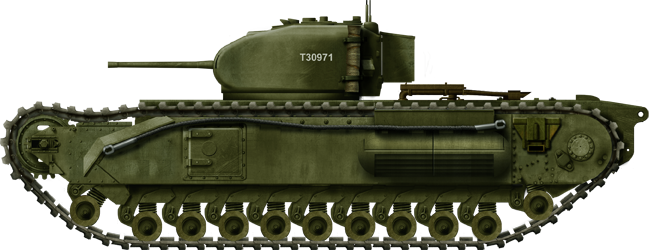
Churchill Mk.I with the early "cylinder" type side exhaust muffler, Great Britain, 1941.
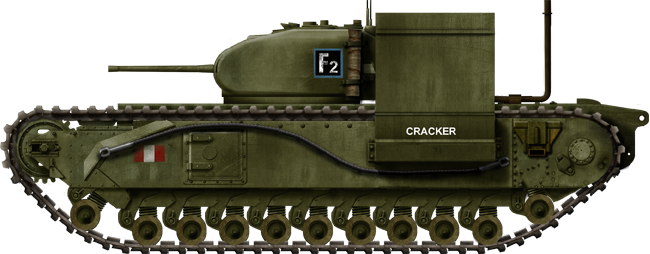
Churchill Mk.I, late production version, with deep wading gear, 14th Canadian Armored Regiment, Dieppe, August 1942.
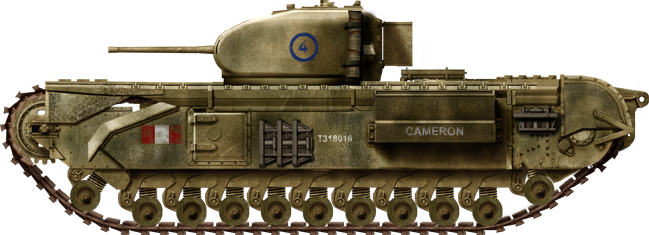
Reworked Churchill Mk.I, North Africa, fall 1942.
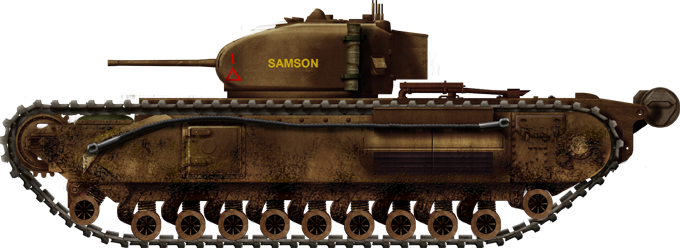
Churchill Mk.II from a training platoon at Salisbury Plain, England, October 1942.
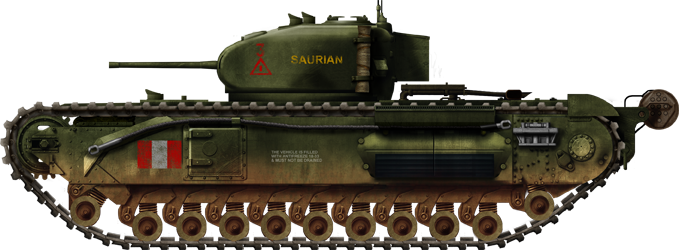
Churchill Mk.II "Saurian", 43rd Royal Tank Regiment, 33rd Armored Brigade, 3rd Infantry Division.
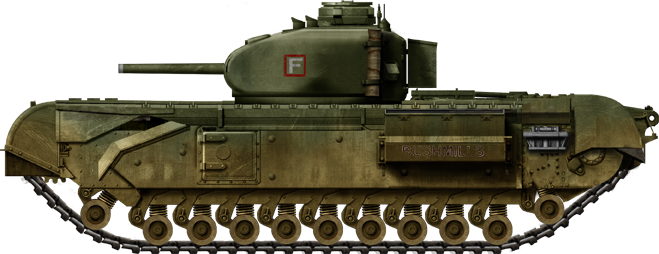
Reworked Churchill Mk.IICS (close support with a 95 mm/3.74 in howitzer), 21st Armored Tank Brigade, North Irish Horse Regiment, Company B, Normandy 1944. Notice the crew had managed to fit a captured Panzer III commander cupola over the main hatch.

Churchill Mk.III (A22B), early type, 43rd RTR, Italy 1944. Notice the late commander cupola fitted instead of the normal hatch.
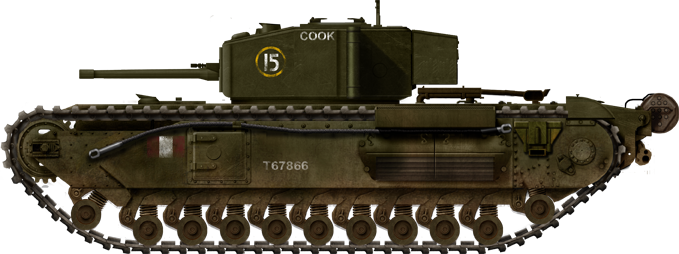
Early Mk.III from the 21st Tank Brigade, fall 1943.
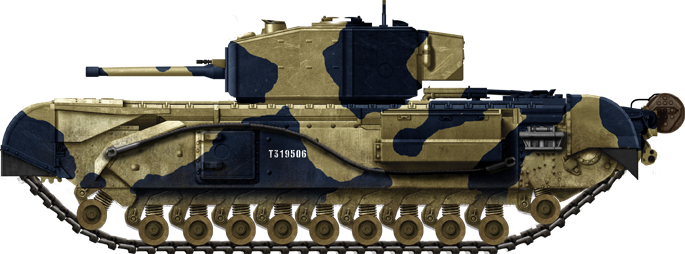
Reworked Mk.III, "King Force" detachment, battle of El Alamein, November 1942.
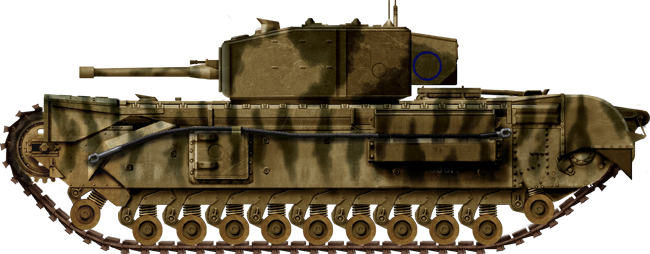
Reworked Mk.III, 152nd Regiment, Royal Armoured Corps, Tunisia 1943.
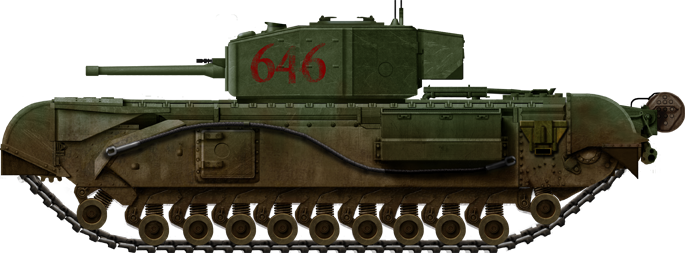
A late Mk.III in Russian service, Northern front, spring 1943.
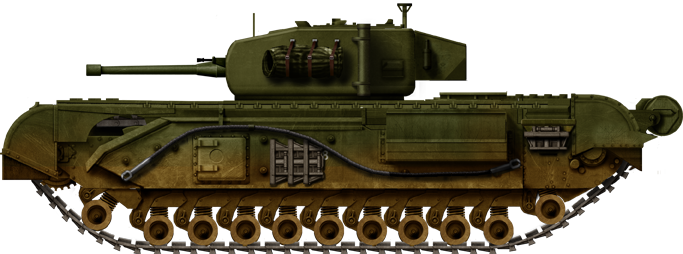
Churchill Mk.IV, cast turret model, 1943.
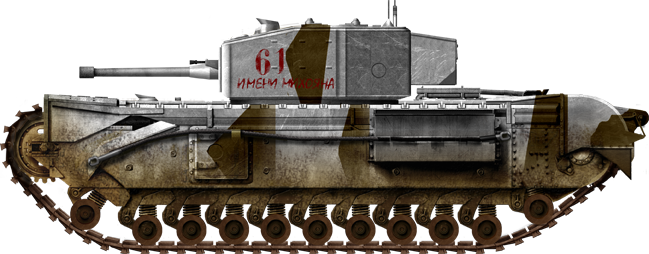
A Mk.IV (welded turret) in Russian service, winter camouflage.
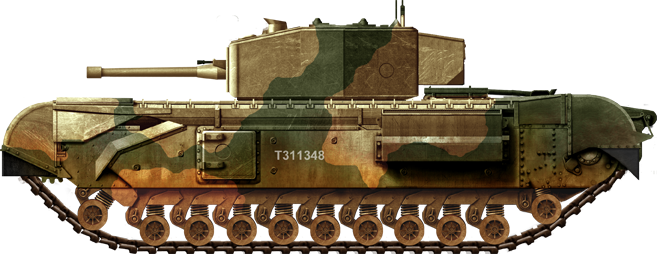
Churchill Mk.IV, welded turret model, Tunisia, fall 1943.
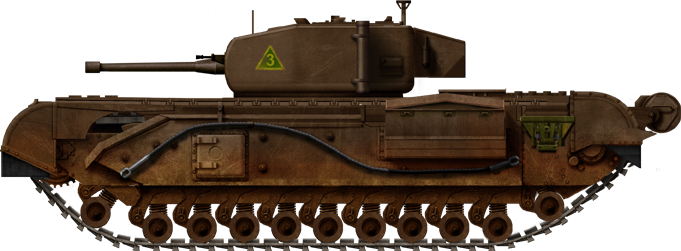
Mk.IV, cast turret, "A" Squadron, North Irish Horse, Tunisia, 1943.
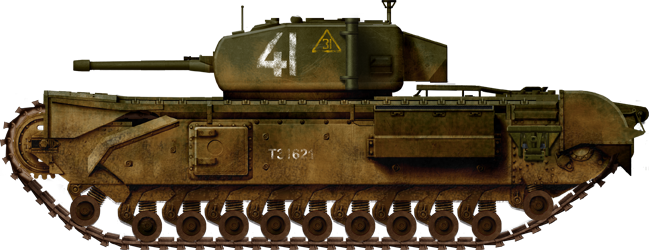
Mk.IV with cast turret, Russian 10th Guards heavy breakthrough Tank Regiment, 23rd Armored Corps, 1st Tank Army, Voronezh, 1943.
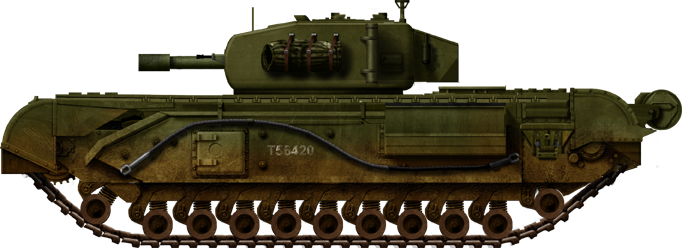
Churchill Mk.V or Mk.V CS, close support version armed with a 95 mm/3.74 in howitzer, 6th Guards Armored Brigade, fall 1944.
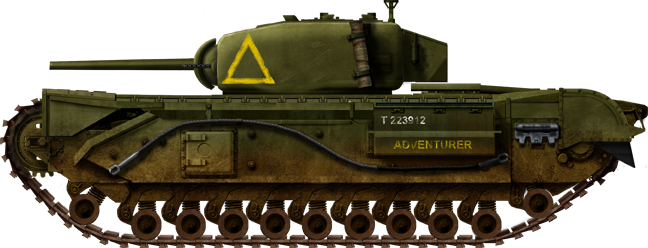
Churchill NA-75, 25th Tank Brigade, 142nd Regiment Royal Armoured Corps, Gothic Line, Italy, 1944.
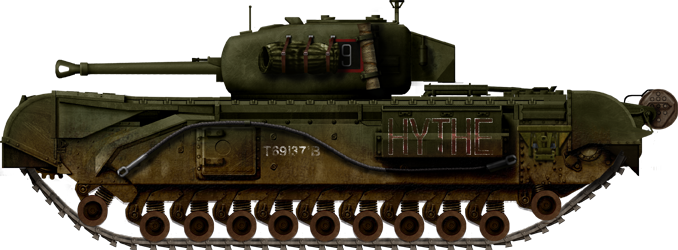
Churchill Mk.VI, 4th Guards Armoured Brigade, Western Europe, 1945.

Mk.VII (A22 F) "heavy Churchill" from the 34th Tank Brigade, 107th RAC, 1944.
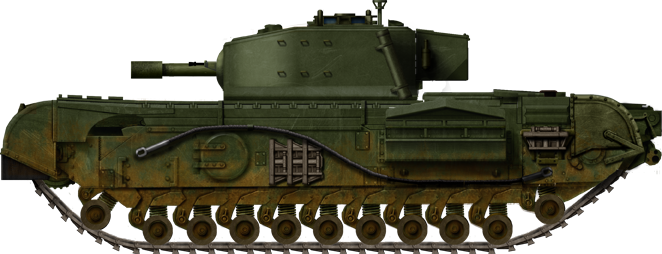
Mk.VII CS, or "close support", 95 mm/3.74 in howitzer.
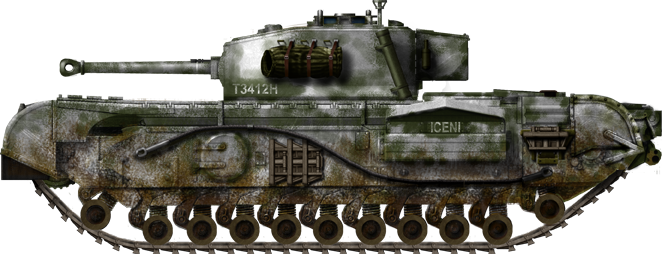
Mk.VII during the winter of 1945, western bank of the Rhine. The smaller round side hatch reduced the stress on the armored plate.
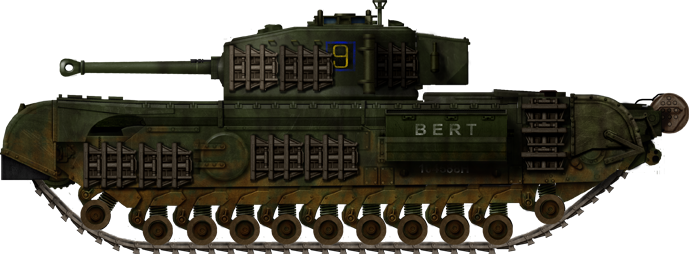
Mk.VII "Bert", (unknown unit) with spare track links as additional protection.
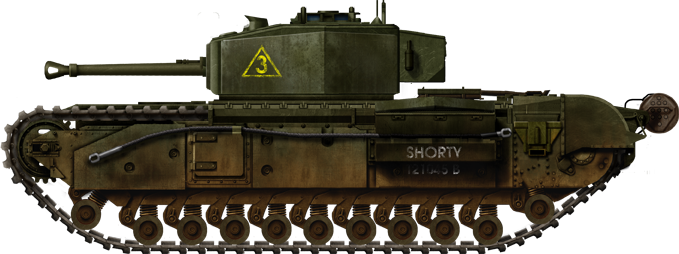
Mk.IX LT ("light turret"), with welded appliqu� armor, 9th RTR, summer 1944.
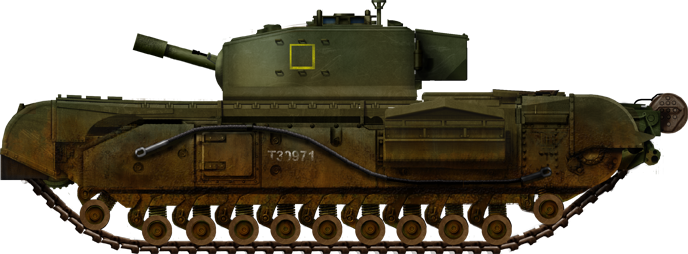
Mk.XI CS, Holland, winter 1944.
Variants
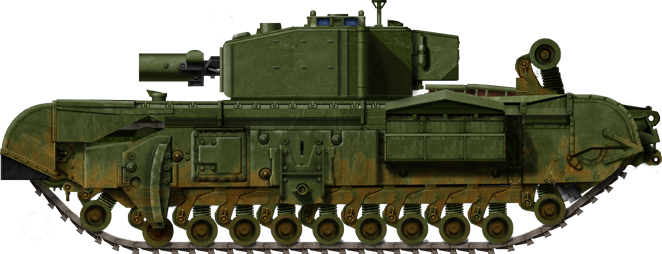
Churchill Mk.III AVRE Petard.

Churchill Crocodile, based on a Mk.III, Western Europe, fall 1944.

Churchill Mk.IV AVRE CIRD, mine-exploder device, Italy, 1944.

Churchill CDL (Canal Defence Light), western Rhine bank, December 1944.
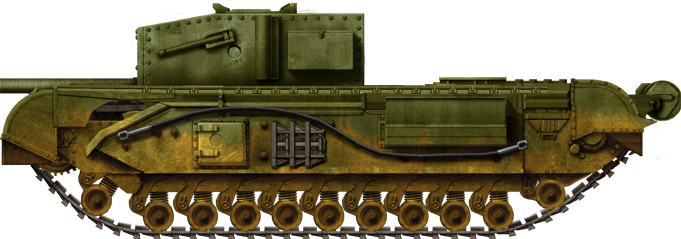
Gun, Carrier 3in Mk.I Churchill. This was the only SPG version of the Churchill, built in 1942, fitted with an antiquated 3 in (76.2 mm) AA gun.
Gallery
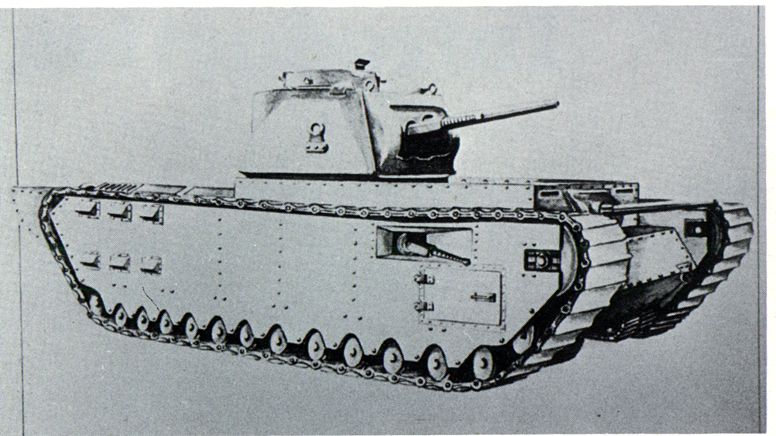
A20 prototype, 1939.
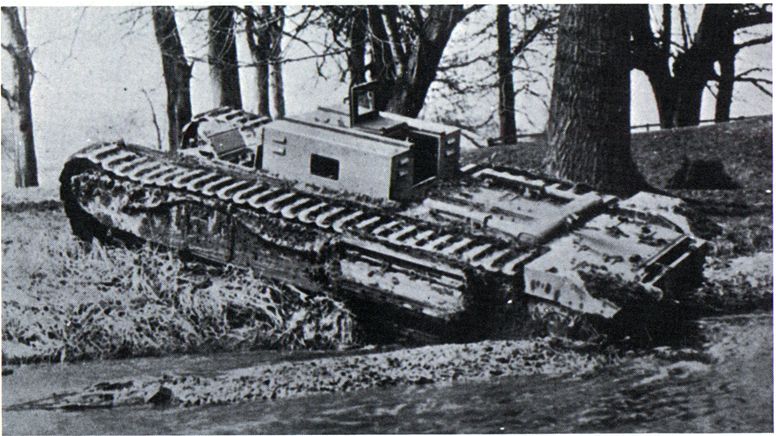
A22 prototype on trials, 1940.
Churchill Mk.I preserved at the Base Borden Military Museum, Great Britain - Credits: Wikipedia

A Churchill Mk.IV in 1942 - Credits: Wikipedia

First (and worst) engagement: Raid on Dieppe, fall 1942. Notice the fording exhaust pipes - Credits: Wikipedia
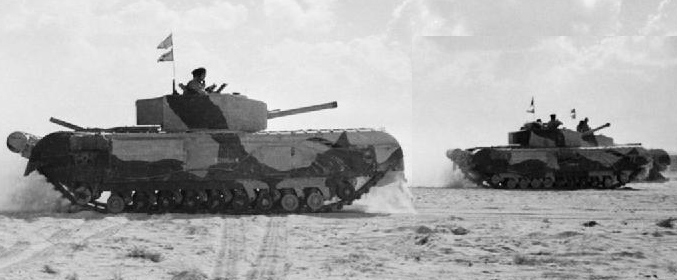
Churchill III of the "King Force", 1st Armoured Division, North Africa, fall 1943 - Credits : Wikipedia
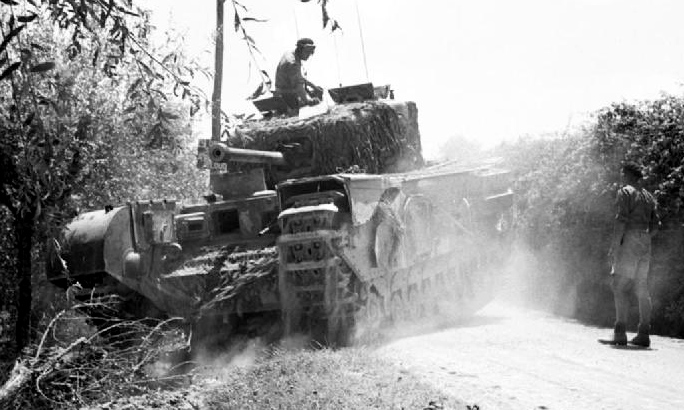
Churchill IV in Italy, summer 1944 - Credits : Wikipedia

Detail of the 290 mm/11.41 in Spigot mortar of a Churchill AVRE from the 79th Squadron, 5th Assault Regiment, Royal Engineers, under command of the 3rd Infantry Division, 29 April 1944 - Credits : Wikipedia
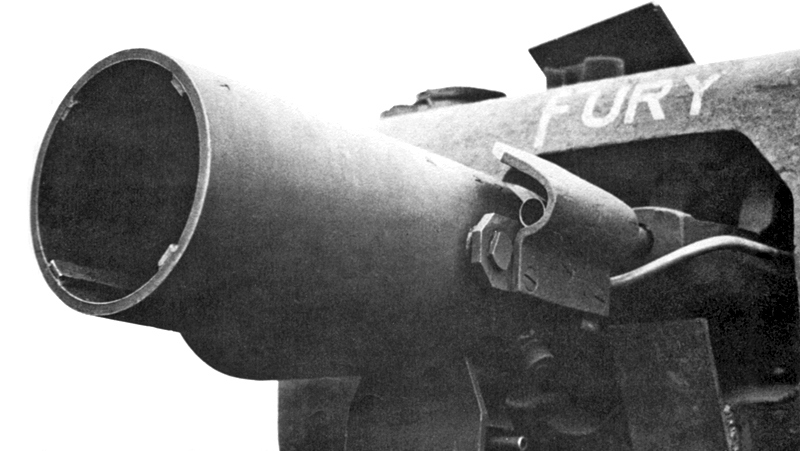
Churchill AVRE petard - another view of the 290 mm/11.41 in Spigot mortar.

Churchill I "Indus" of "B" Squadron, 9th Royal Tank Regiment with a 3 in/76.2 mm howitzer and 2-Pdr, training at Salisbury plains - Credits : Wikipedia

Churchill Mk.I with a 3 in/76.2 mm howitzer preserved on static display, "Gate guardian" at Bovington - Credits : Wikipedia
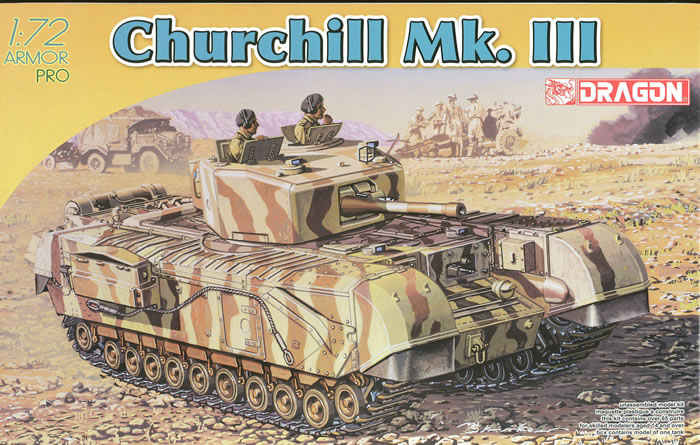
Artist impression, Dragon Mk.III boxart, 145th Rgt RAC, Tunisia, 1943.
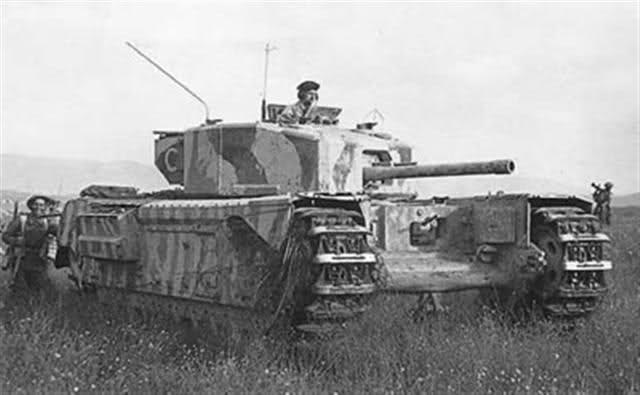
The original Churchill with the famous "tiger pattern" livery.
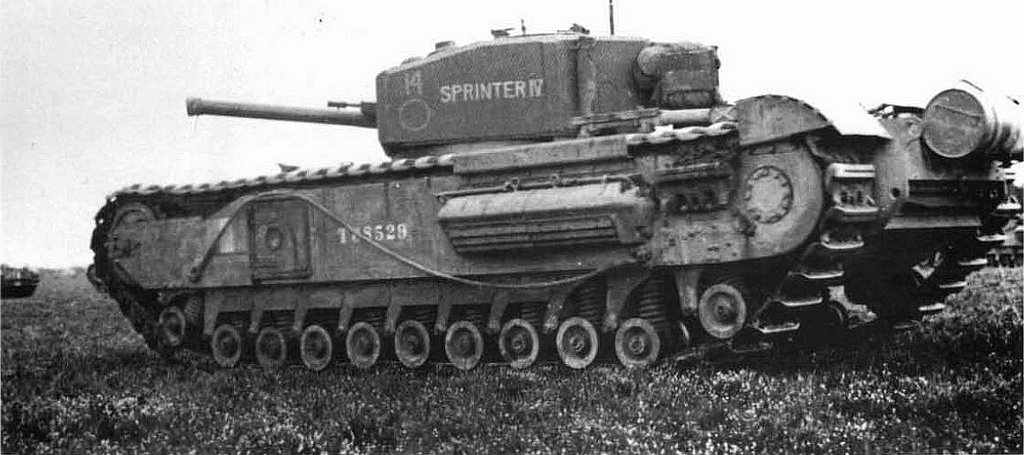
Mk. III, early type
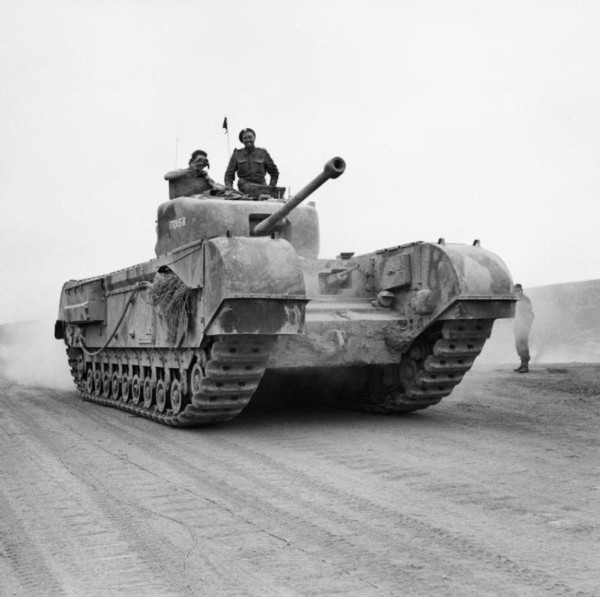
Churchill Mk.IV, with the cast turret
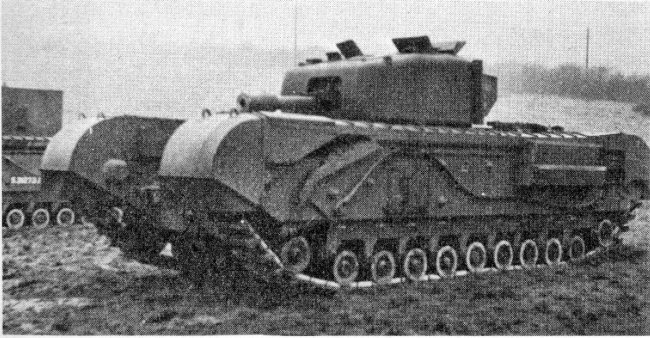
Mk.V Close Support.
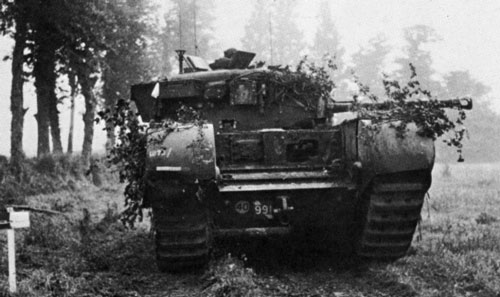
Mk.VI.
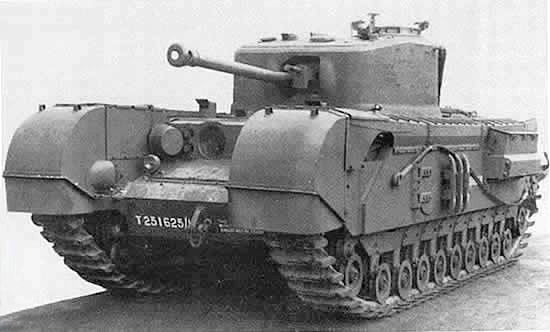
Churchill Mk.VII - Credits : Wikipedia
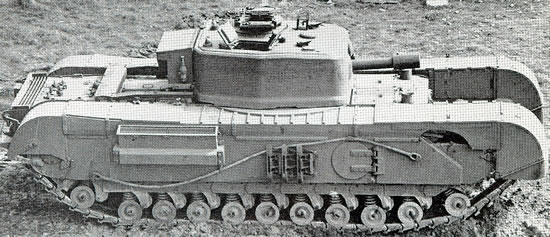
Churchill Mk.IX.
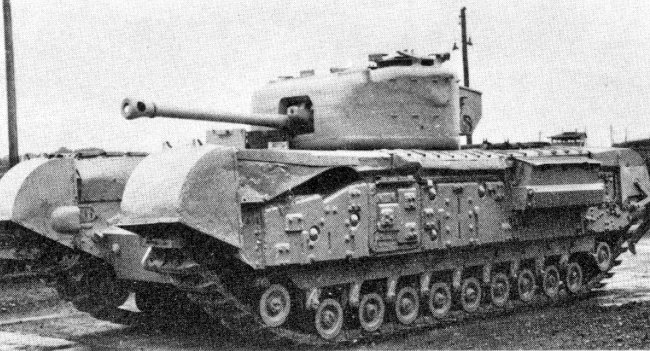
Churchill Mk.X LT ("light turret").

Churchill Mk.VII AVRE fascine carrier - Credits : Wikipedia

Churchill II AVRE with Jib Crane - Credits : Wikipedia
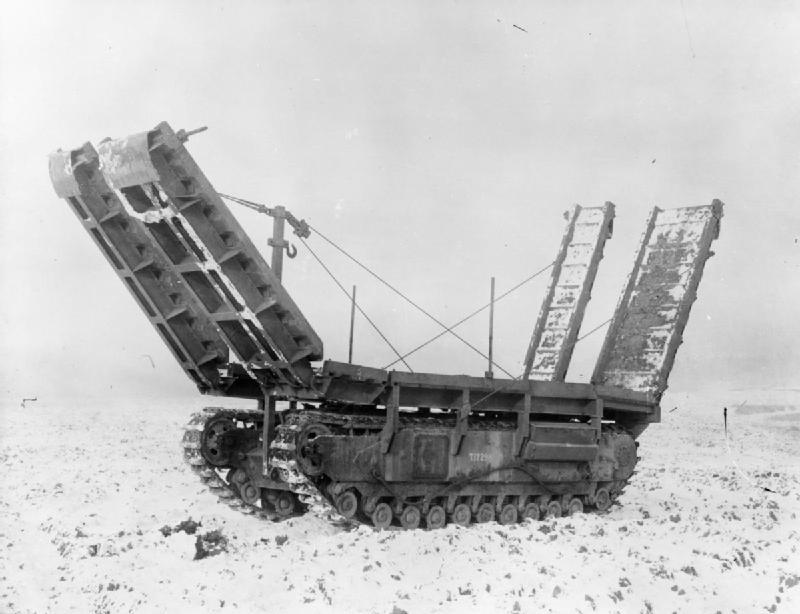
Churchill ramp carrier - Credits : Wikipedia
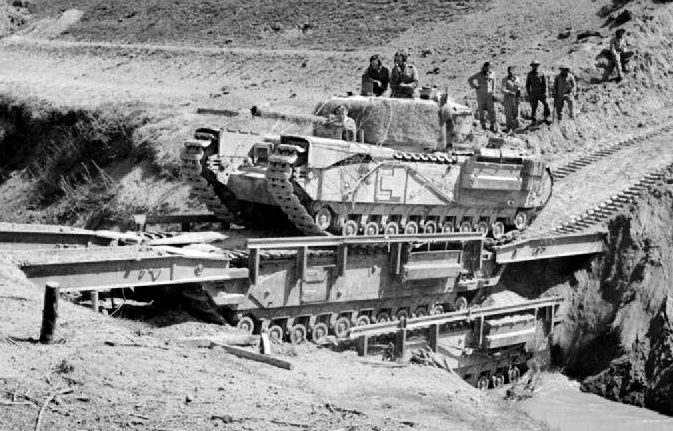
Churchill Ark, from the North Irish Horse, at work crossing the River Senio in Italy, April 1945 - Credits : Wikipedia

Churchill VII Crocodile, Holland, winter 1944/45 - Credits : Wikipedia

Churchill Crocodile, detail of the flame projector - Credits : Wikipedia
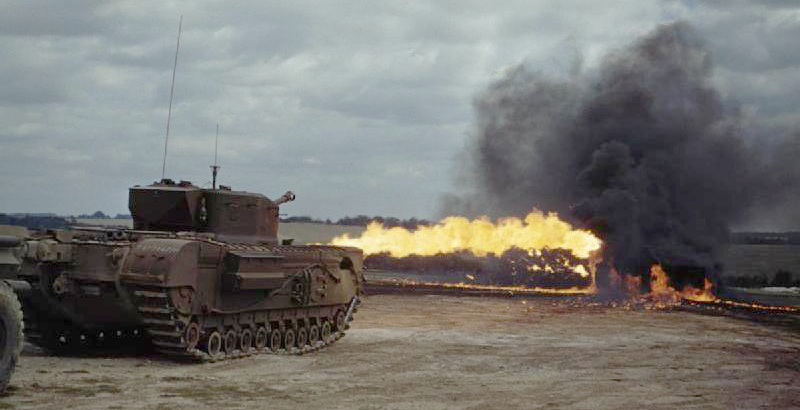
Churchill Crocodile in action, rare color photo.
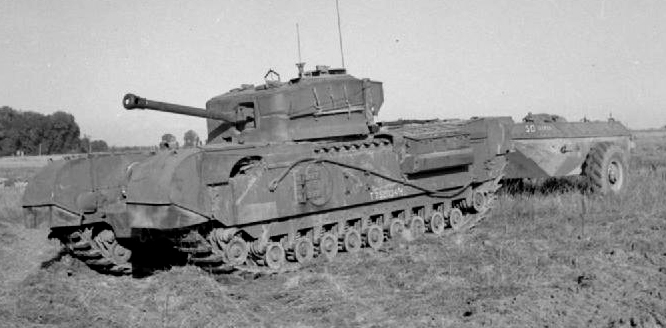
Churchill Crocodile and trailer during trials.
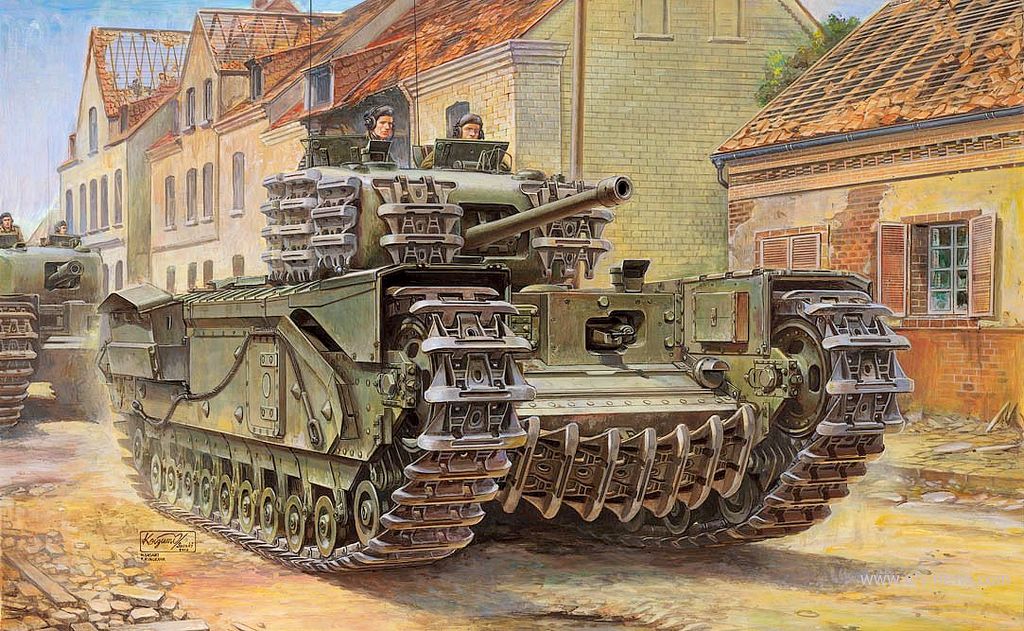
Churchill Mk.IV, model kit boxart, artist impression.
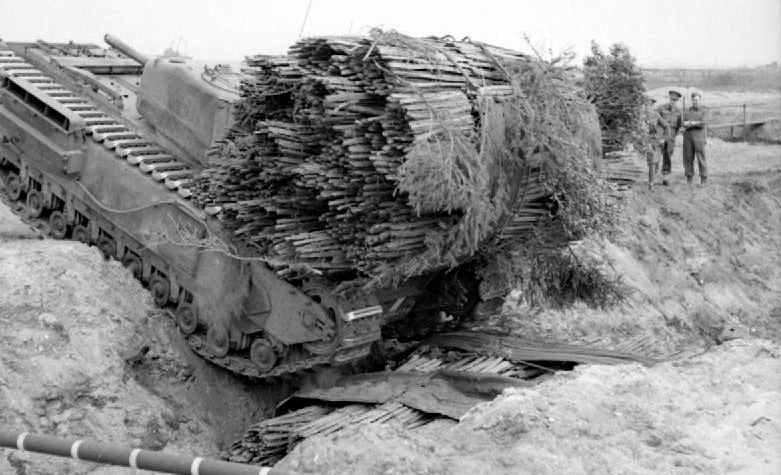
Churchill AVRE fascine carrier in action. The fascines had a central core of metallic hollow tubes to let water flow freely.
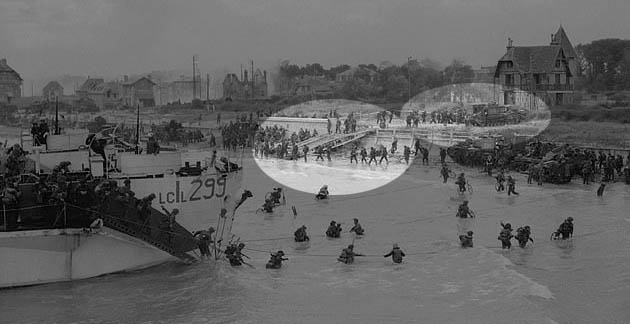
Churchill AVRE Small Box Girder in action during the Normandy Canadian landing (Juno beach).
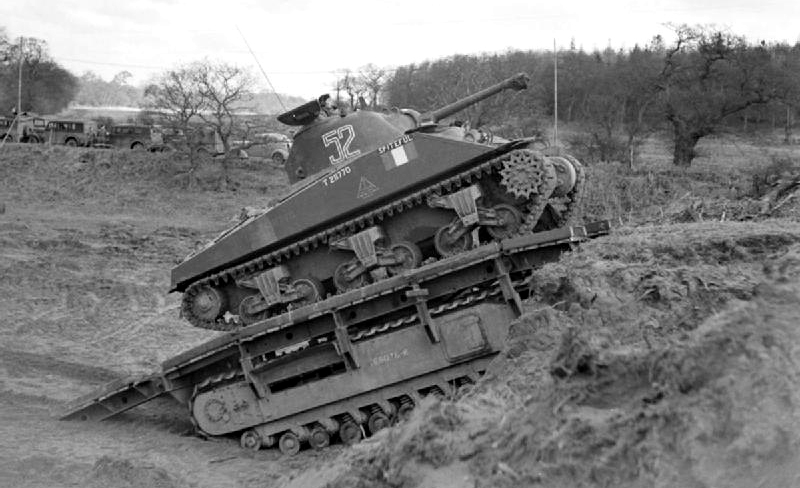
The ARK in action.
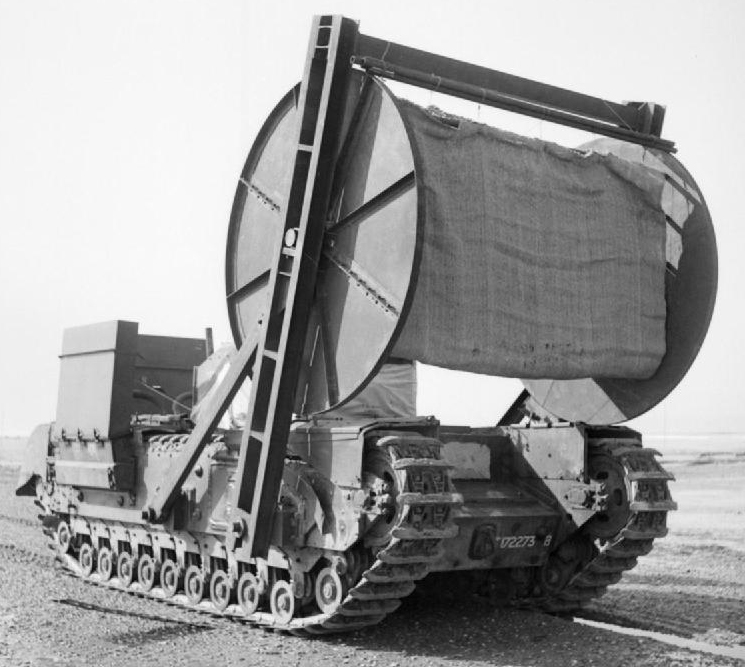
The AVRE Bobbin.
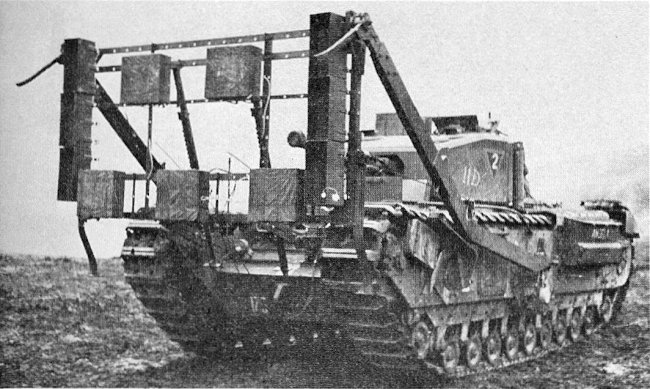
Royal engineer\'s AVRE "Double Onion" special demolition vehicle.
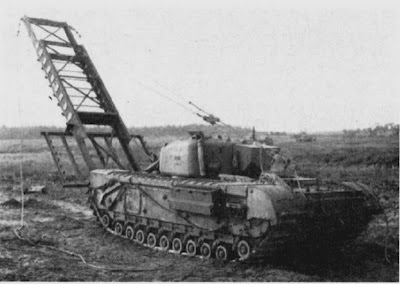
AVRE Goat demolition vehicle.
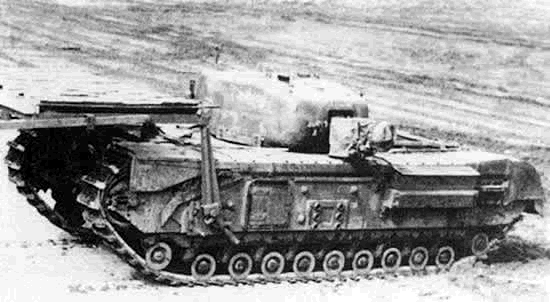
AVRE Goat demolition vehicle.
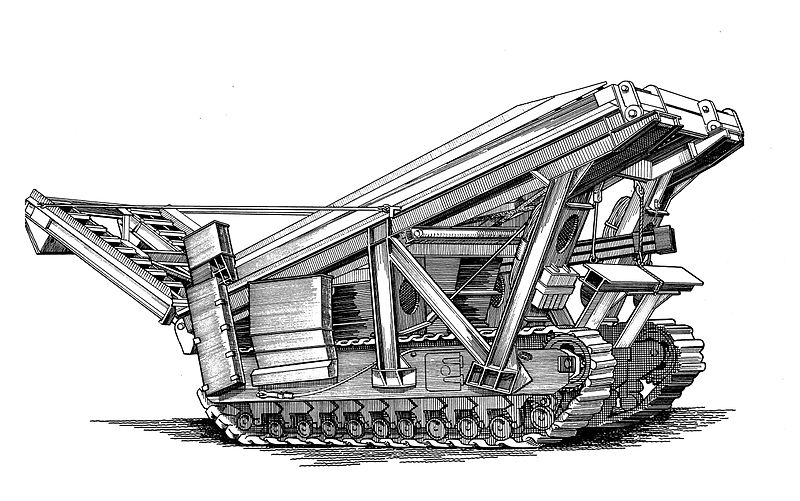
Bridgelayer "Great Eastern" drawing. Only ten built in 1945. The bridge was laid in a few seconds, using rockets.
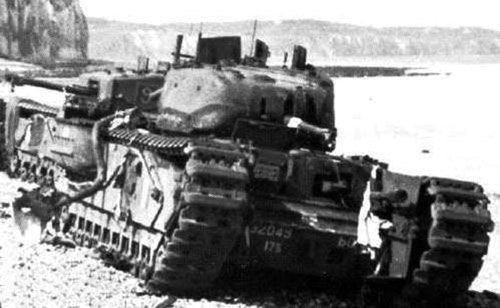
Churchill Oke (experimental flame-thrower version), abandoned at Dieppe.
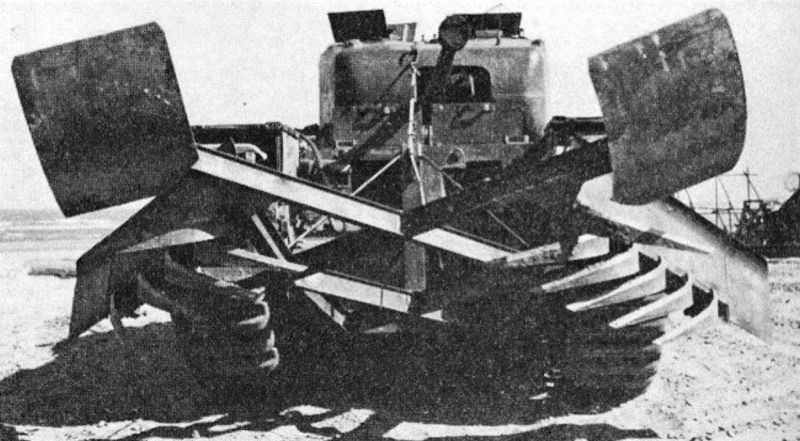
Churchill III Bullshorn plough.
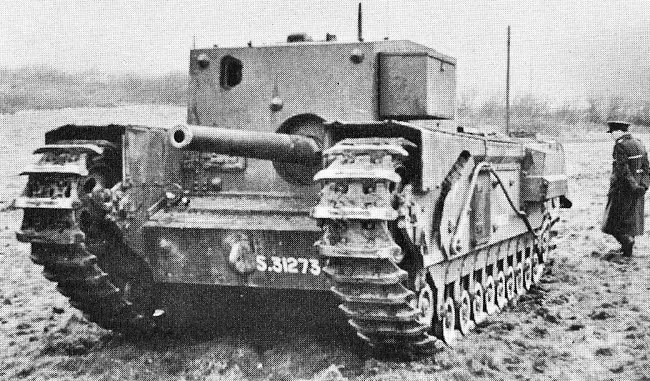
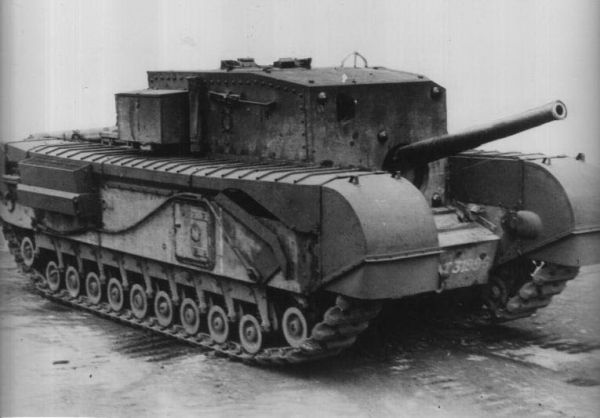
Churchill A22D SPG (Gun Carrier, 3 in, Mk I).
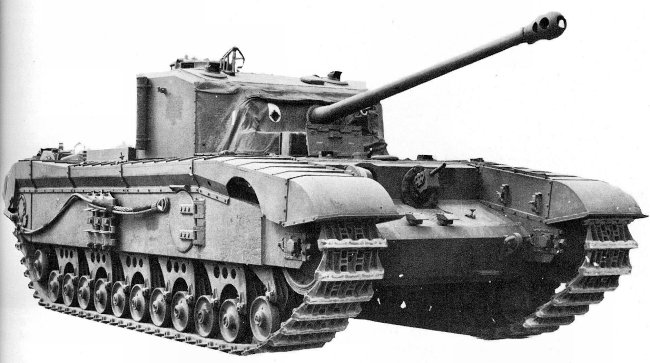
Churchill Black Prince (A43).

WW2 Tanks




























WW2 tanks posters

All Tiger tanks liveries.

Panther liveries and variants

WW2 Armour - All tanks











Tanks aces and single tanks series

Find more there

Museums, Movies, Books & Games
The Tanks and Armor in pop culture
Tanks and armored vehicles in general are only really grasped when seen first person: The mass, the scale, it's all there. Explore also the way tanks were covered in the movie industry, in books and in video games.Movies:
Best tanks movie on warhistoryonline.com
On imdb.com
On bestsimilar.com/
miltours.com
liveabout.com/
watchmojo.com
Video Games:
pcgamesn.com
historyhit.com
levvvel.com
vg247.com/best-tank-games
mmobomb.com/
alienwarearena.com

